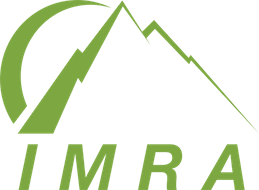Event Difficulty
The TAD system measures race difficulty over three categories. Each category is measured from 1 (easiest) to 3 (most difficult).This gives every race a rating from 3 (Easy) to 9 (Very Difficult). In addition a few races with more than 1000m of ascent or longer than 30km are automatically rated 10 (Extreme).
When chosing your races, you can use the TAD rating to gauge whether or not the race is suitable for your physical fitness and experience in the hills:
TAD Recommended Experience
THE THREE CATEGORIES
T(errain): The nature of the underfooting and the level of exposure to open mountainside.
We measure this category into:
- Easy (1): The route is mostly on trail/fire trail/forest tracks with good underfooting, few or no obstacles, and no open mountain side or passages through heather, scree and other difficult terrain.
- Moderate (2): The average hill race falls into this category and includes for the most part trails as decribed above, but does have shorter passages on open mountain, through bog or heather, sections with loose rocks, and obstacles (small stream, large boulders).
- Difficult (3): These races feature little or no trail (as described above) and are mainly on open mountainside often with passages of loose rock, scree, bog, and significant levels of exposure to wind. Route choice will be fairly open, and obstacles will be frequent (streams, boulders, crevases) etc.
For "Easy" terrain some cover can still be necessary depending on weather conditions while normal runners and trail runners are both good choices for footwear. For "Moderate" and "Difficult" terrain specialised hill running shoes are recommended and cover would be essential.
A(ltitude): This category simply measures the total change in elevation you will experience throughout a race.
<200m: 1
200-500m: 2
>500m: 3
Also note that any race with an elevation of more than 1000m is automatically rated "10" in the TAD system.
While this does not tell the full story of the hardness of the race, you can deduct the ascent grade (e.g. the steepness) from the length of the race versus the elevation.
If a race is relatively short but features a lot of climb, it will be steeper and may be slightly harder than it is rated. In general, though, the climb will give you a precise idea of how long you must be able to run up.
D(istance): This rating is based simply on the length in kilometres of the race:
<6km: 1
6-10km: 2
>10km: 3
Note that races longer than 30km are automatically rated "10" (extreme) by the TAD Rating system.
MEDICAL CONDITIONS
As with normal running it's critical you don't undertake a hill race if you are suffering from any medical condition or if your GP has advised against it.
Due to the nature of hill races, you would put yourself, and others, at greater risk if you attempt to undertake a race and you can, for any reason, not get back on your own.

